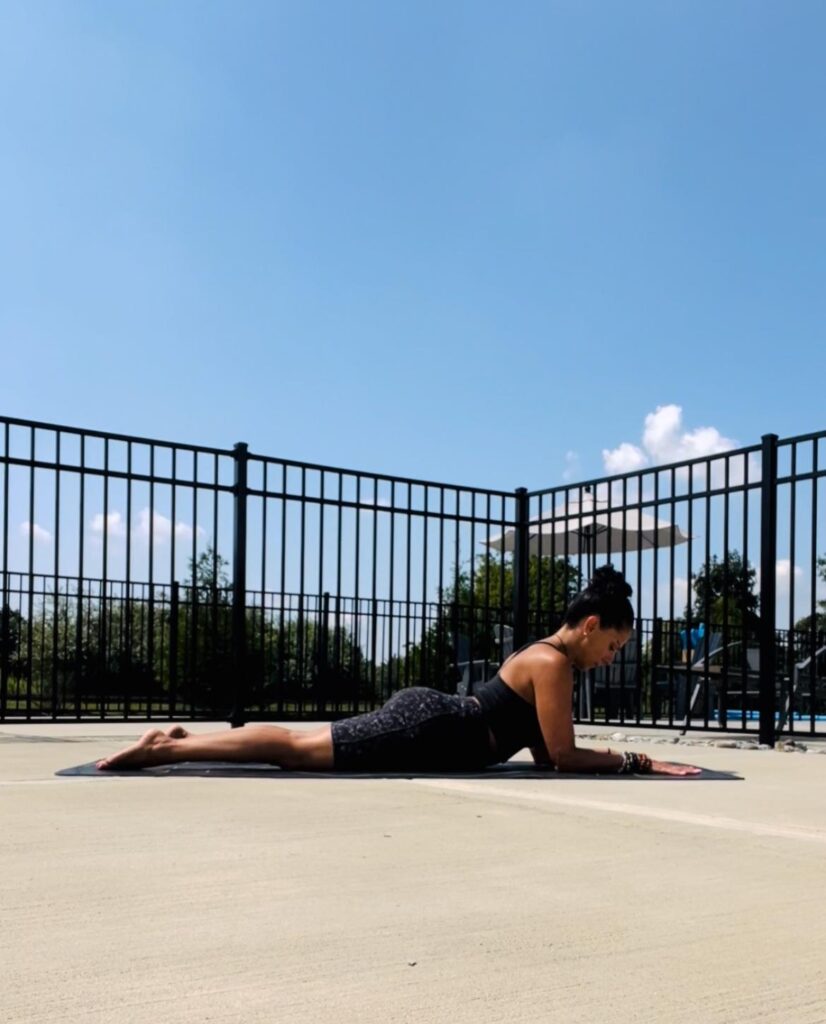RELIEVE BACK PAIN AND FATIGUE IN THIS BEGINNERS YOGA POSE OF THE WEEK:
Sphinx –
Salamba Bhujangasana (Sanskrit)
(sah-LOM-bah boo-jahn-GAHS-uh-nuh)
sa= with
alabama= support
bhujanga= cobra
asana= pose
There are many physical, emotional and mental benefits of Sphinx Pose. It is considered the gentlest of backbends and can relieve stress, invigorate the body and stimulate the nervous system. It’s considered a beginners pose and is part of the same family of postures as cobra or upward facing dog but without the weight bearing on the wrists.


Benefits:
- Strengthens back muscles, shoulder blade stabilizers and spine
- Improves spinal mobility, range of motion, flexibility and poor posture
- Stretches chest, shoulders, abdomen, thighs and hip flexors
- Increases circulation in legs
- Can relieve back pain from herniated discs and sciatica
- Firms glutes and thighs
Step by Step:
- Lie on your belly with pubic bone, thighs, knees and shins on the floor, feet hips distance apart
- Place elbows beneath shoulders and forearms on the floor parallel to each other
- Palms flat, push fingertips and forearms into the floor to lift chest up
- Extend the spine, elongate side body, lengthen tailbone
- Spread across the collarbones, roll shoulders back, release shoulders away from ears
- Neck is long, jaw is soft and gaze is slightly forward
Modifications:
Place a blanket under the forearms or beneath the pubic bone for added cushion. You can support your head with your hands if the head feels too heavy to hold up.
Sphinx pose can help establish a deeper connection with the body. When used within a yin practice or more as a passive pose, you can experience calming, soothing benefits and help relieve fatigue. When used as an active pose by engaging your muscles, Sphinx can be an energy booster and prepare the body for deeper backbends.
Enjoy this pose for a few breaths or up to five minutes for optimal benefits




